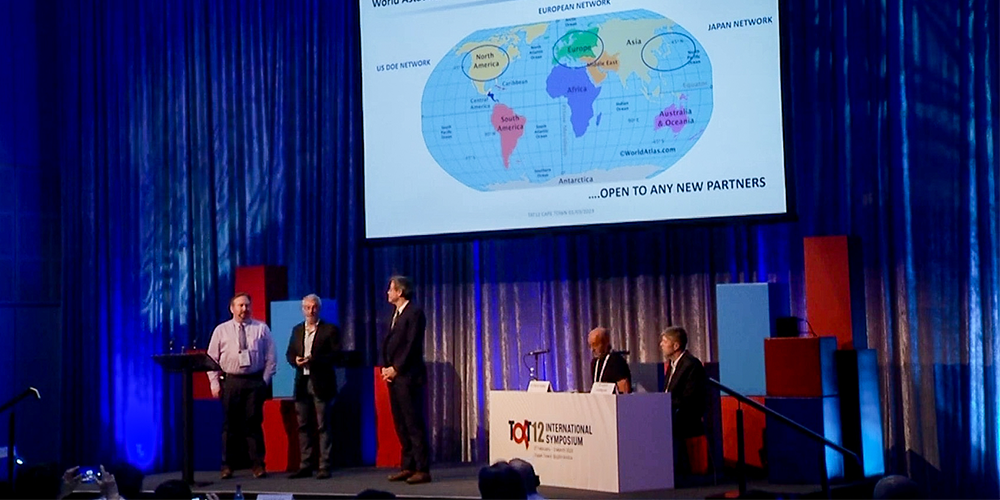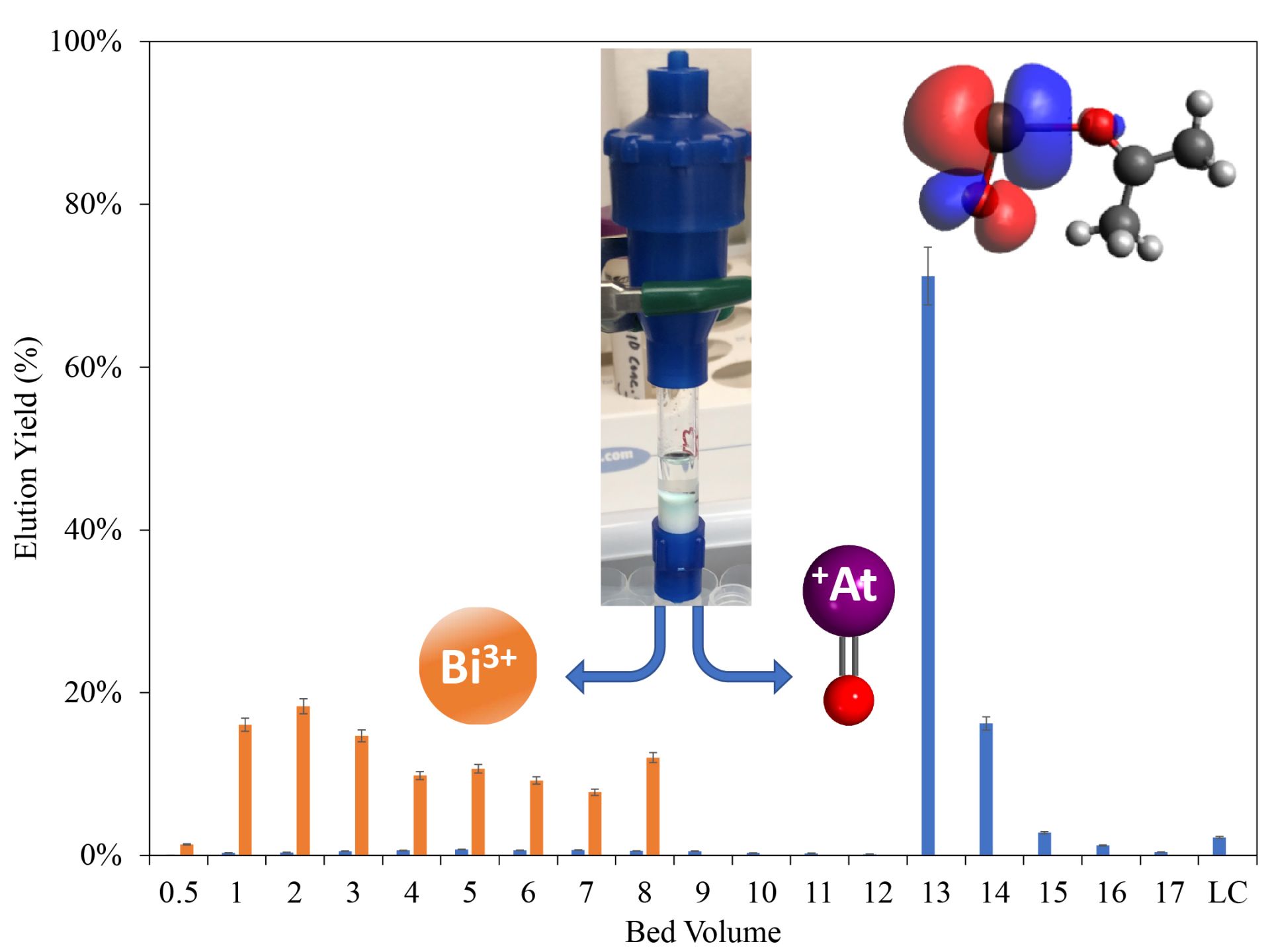Representatives from the U.S., EU, and Japan announce the WAC at the 12th International Symposium for Targeted Alpha Therapy. (Photo: NIDC)
The World Astatine Community (WAC) was formed earlier this year during the 12th International Symposium for Targeted Alpha Therapy by representatives from the United States, Japan, and the European Union to share astatine production technology and advance science and health care. The National Isotope Development Center (NIDC), which is managed by the Department of Energy’s Isotope Program (DOE-IP), announced the news on June 15 and explained how the United States plans to help expand the global supply of astatine-211.
A clinical dose of At-211 is prepared at the University of Washington for use in a Fred Hutchison Cancer Center clinical trial. (Photo: UW/Don Hamlin)
Scientists in the Departments of Radiation Oncology and Medicine at the University of Washington (UW) and Fred Hutchinson Cancer Center (Fred Hutch) are directly targeting cancerous cells traveling through patients’ bloodstreams with diseases such as leukemia and lymphoma using an intravenous injection of the radioactive isotope astatine-211 (At-211). The work, its challenges, and its promise were described in a recent news release from the National Isotope Development Center (NIDC), which is managed by the Department of Energy’s Isotope Program.





